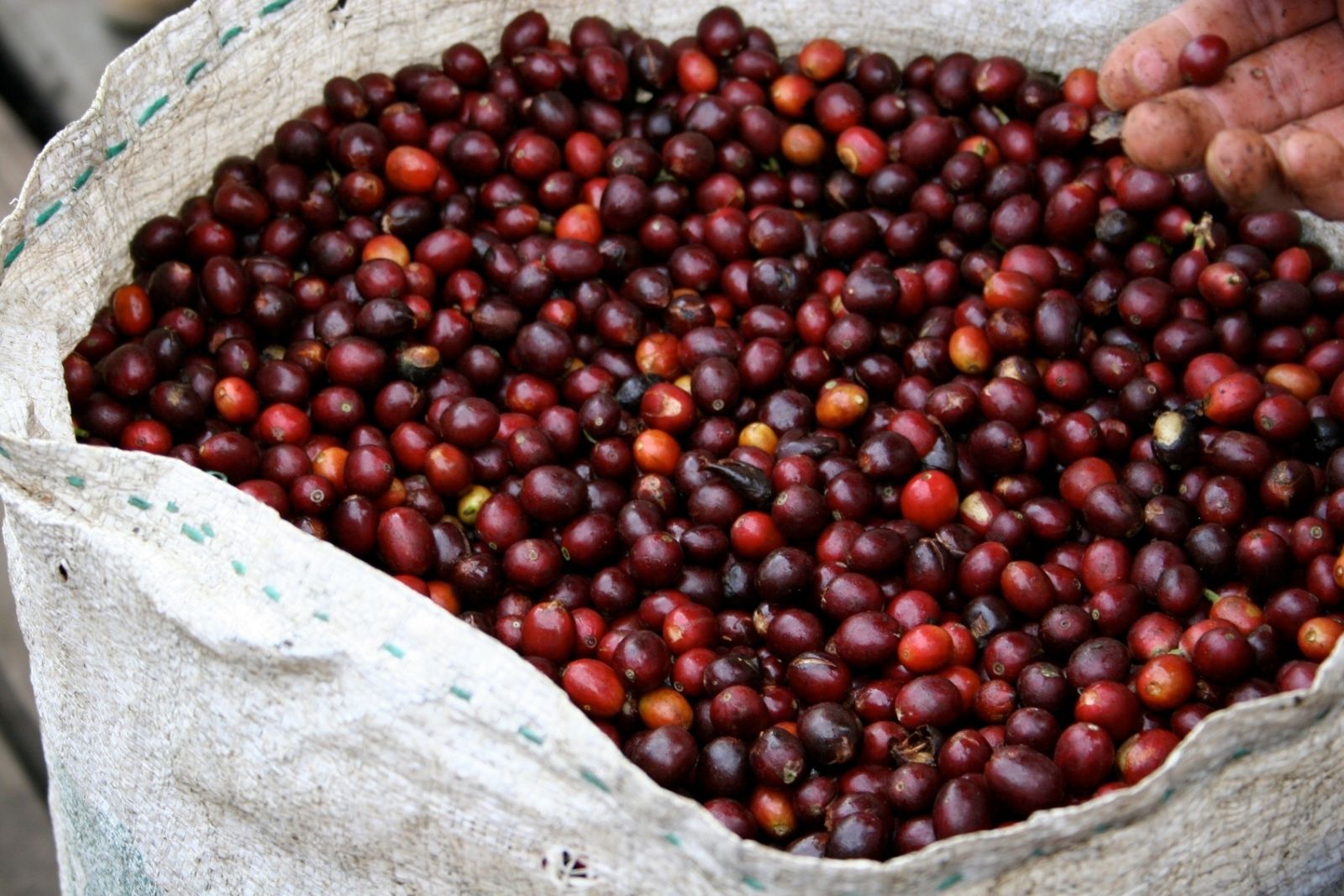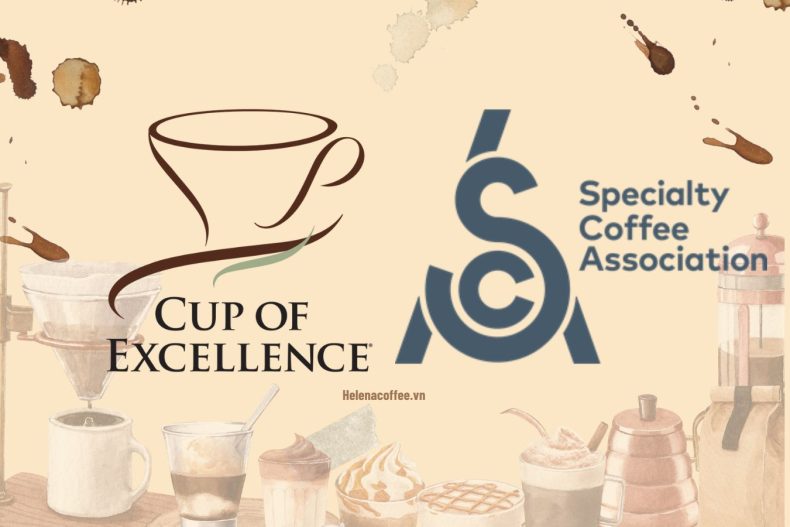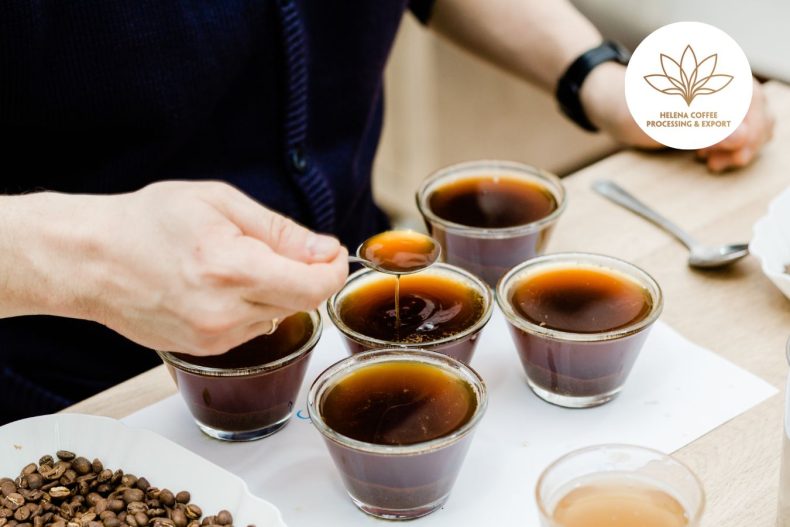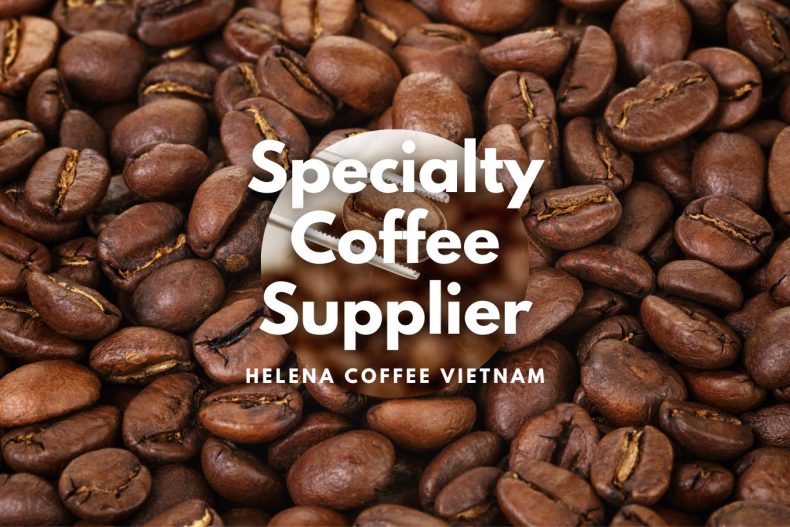
What is Fine Robusta? – Is a Robusta coffee graded to ” Fine ” by R Grader. R Grader is certified by CQI. The process of grading green and roasted coffee beans through cupping according to CQI & SCA standards. “Fine,” not simply as good or better.
What is Fine Robusta?
For Arabica coffee to be called “Specialty grade coffee”, a lot of coffee needs to be graded by Q grader through 1. assessing the quality of green coffee, and 2. through cupping according to SCA’s standards and rules.
Coffee with 80 points or more is called “Specialty”. The scoring criteria and quality assessment are regulated by SCA (Specialty Coffee Association).
Based on the standards of SCA, CQI (Coffee Quality Institute) has certificates of Q Arabica Grader (assessment of Arabica coffee quality) and Q Robusta Grader (or R Grader, assessment of Robusta quality) issued to individuals who pass.
The 22-part Grader exam focuses on knowledge and skills in tasting and classifying coffee.
CQI was established in 1996 and the Q Program course has been available since 2003. Q Grader must renew its certificate every 3 years to ensure skills and knowledge are always up to date. In 2009, CQI organized a symposium on Robusta.
The first Q Robusta course specializing in Fine Robusta evaluation and grading was held in Uganda in 2010 with the Uganda Coffee Development Authority (UCDA).
Thus, it is not difficult to see that:
- “Fine Robusta” is a Robusta coffee graded to the “Fine” threshold by R Grader. R Grader is certified by CQI. The process of grading green and roasted coffee beans through cupping according to CQI & SCA standards.
- “Fine” is not simply delicious. “Fine” is a rating level that has its own standard.
- “Fine Robusta” and Robusta quality have only been focused on for the past 10 years. The Government of Uganda (one of the countries with increasingly high quality of Robusta) plays an important role in developing and spreading the concept of “Fine Robusta” to the European market (where a lot of Robusta is imported) and other countries. plant this cultivar.
Evaluation criteria “Fine Robusta”
Like the Specialty Arabica assessment standard, the Robusta assessment requires two steps:
Green coffee quality review
There are 2 types of defects: Primary (main defect) and Secondary (secondary defect). Primary defect includes errors such as Full black (completely black coffee), Foreign matter (there is a foreign object in the coffee sample), Fungus or Mold (mold or fungus coffee), Severe insect damage (insect damage).
Do secondary defects include errors such as? Broken/Chipped (broken beans), Partial black (partial black bean), Partial insect damage (partial insect damage).
The image below is from Fine Robusta Standards and Protocols — The author’s main document for reference in this article.



Under “Fine Robusta” is “Premium Robusta”. To be considered “Premium”, lots and samples must not contain more than 8 Full defects (including Primary and Secondary defects).
Example: Sample has 1 grain of Full black + 1 grain of Full sour + 3 seeds of Partial black = 3 Full defects. This is still a “Premium” bean.
Judging quality by cupping
CQI has its own regulations on how to cup Robusta. Sample Robusta coffee must be roasted ‘darker’ than Arabica ( Agtron gourmet color 48 with unground coffee, 78 +/- 1 after grinding).
Cupping with the ratio of 8.75gr coffee:150ml water. The remaining regulations such as water quality, degas time before the cup, water temperature, cupping table area, etc. are all very clear but I will not mention them all ^^
The biggest difference in Robusta cupping can be seen in the Cupping form. With the SCA Cupping form for Arabica, you can see:

-
- Scale 6 – 10 for each attribute to be evaluated: Fragrance / Aroma (flavor dry/wet), Flavor (taste), Aftertaste (Late position), acidity (acidity), Body (The ‘thickness’ of coffee in the mouth), Balance and Overall. The maximum total score for 7 attributes is 70.
- Uniformity has 5 boxes because each coffee sample requires 5 cupping samples on the same table. If all 5 samples taste the same, the Uniformity score is 10.
- If Uniformity = 10, Clean cup (Coffee feels ‘clean’) and Sweetness ( Sweetness ) is automatically 10 each.
- If out of 5 cups of cupping, 1 sample is different from the other 4 samples, the judge deducts 2 points from the Uniformity.
- With the cupping cup having a very different taste, the judge should guess what the defect is and make a note of it. Since the sample has 1 cup with defects, the Clean cup is deducted 2 points. Sweetness is also deducted 2 points.
- Overall (Overview) is based on the reviewer’s perception of coffee quality.
- Defect: Taint is an error when a cup of cupping tastes only slightly different, especially in scent. The fault is a bug that affects the taste of coffee. If there is a Defect, the scorer subtracts 2 points for Taint and 4 points for Fault out of the total score.
- Coffee with a score of 80 or higher is considered ‘Specialty Grade Coffee’.
What about the cupping form of Robusta?

-
- Like the Cupping form for Arabica, the cupping form for Robusta has an assessment of Roast level, Fragrance/Aroma, Flavor, Balance, Overall.
- With Aftertaste, the form has 2 options: Brackish aftertaste (unpleasantly salty) or Savory (balanced salty taste, umami). Savory is the more overrated aftertaste.
- There is no point in Body, as Robusta is always considered to have a thick Body.
- Instead of Acidity, the cupping form for Robusta uses the Salt/Acid Ratio scale. The scale for Salt and Acid is from 1 to 6. The CQI believes that because Robusta has a lot of potassium which creates a certain salinity in coffee, the cupping form should reflect the fact that Robusta always tastes salty, and this is not a defect. . “Fine Robusta” is considered to have lower salinity and higher acidity. The lower the perceived salinity, the higher the ‘Salt’ score. Higher acidity, higher Acid score. The total score for the Salt/Acid Ratio is 10. (Example: We can only have Salt 5 + Acid 5 = Total 10; cannot have Salt 6 + Acid 5 = Total 11).
- The Bitter/Sweet Ratio is also scored from 1 to 6 for Bitter and Sweet. The total score should not exceed 10 because Robusta is always considered to have a certain bitter taste. The less bitter the taste, the higher the score. High sweetness means a high score.
- Mouthfeel is rated as Rough (uncomfortably rough feeling) or Smooth (smooth).
- Similar to Arabica, if 5 cups of cupping have the same taste, the score of Uniform cups and Clean cups is 10. For each cup of cupping that has a very different and obvious Defect taste, the scorer will deduct 2 points.
- If the sample has Taint or Fault, the scorer subtracts 2 or 4 points from the total score (same as cupping Arabica).
As you can see, cupping Robusta is quite different from cupping Arabica. The biggest difference is probably with Arabica, if the Uniformity score is 10, the regular coffee sample is always +10 points for Sweetness.
Meanwhile, when grading Robusta, R Grader must think about the Bitter/Sweet Ratio and understand the criteria for Robusta to be considered sweet.
With a total score of >90, this sample is considered “Very Fine Robusta”. “Fine Robusta” is a sample with scores from 80 to 90. From 70 to 80 points, ?sample is considered “Premium Robusta”.
Fine Robusta Production in Vietnamese Coffee Culture
To put it right, “Fine Robusta Coffee” is only “Fine” when it has been graded by R graders through cupping according to the CQI standard for Robusta. However, for the coffee to be graded, the coffee maker must register on the CQI portal and pay the grading fee (150 – 350 USD/lot 2kg), and then send the lot to the CQI representative facility. Not everyone has the conditions, budget, and time for the above steps.
At Helena., JSC, Vietnam Fine Robusta ordered by Helena., JSC with farmers in Daklak province is hand-picked, only ripe red fruits are picked and dried on high rigs. Robusta at Helena., JSC is a carefully selected coffee, has a thick body, very ‘earthy’ flavor, and teaches dark chocolate, with a sweet and clean aftertaste.
Not yet/not graded and tested doesn’t mean the coffee isn’t good. If you ignore the score story, the final ” Fine Robusta” is still Robusta coffee harvested when the fruit is ripe, red, preliminarily cleaned, without defects, and roasting with the best profile, highlighting the flavor own taste.
When the coffee is carefully fertilized, with enough water, good soil, when the coffee berries are picked, red, and cleaned, the coffee could always be delicious in its own way. CQI’s scale shows that: We cannot compare Robusta coffee beans with Arabica coffee beans, but that does not mean that there is no quality Robusta. As the ratio of Arabica to Robusta coffee in the world has changed over the decade (in the past it was usually 75:25, but now some researchers think the ratio has reached 60:40) and Climate change, for the writer, Fine Robusta Coffee in particular and Robusta Coffee, in general, are indispensable for the future of coffee.
FAQ:
- Do you know Vietnamese Coffee Culture and Caphe Vietnam fine in specialty coffee industry?
- What is Specialty Arabica Coffee Processing?
- How to produces fine robusta?
- What should you know about coffee industry robusta?
- Do you know coffee quality institute Q grader?
- Should we be roasters or espresso producers?


